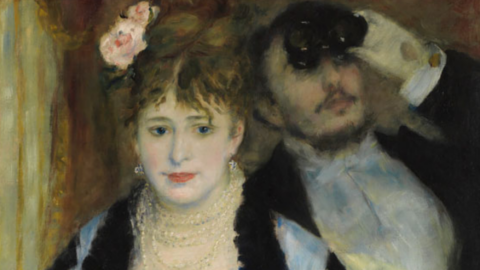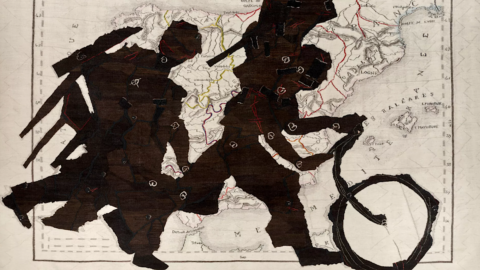Technology e impossible
John Vermeer, the great Dutch artist and portrait painter, was hardly a prolific artist. Only 36 paintings have come down to us, on which there is unanimity of attribution. However, they are scattered around the world. Anyone wishing to see them would have to travel far and wide, to New York, London, Paris, L'Aja etc.
… Until now. But someone has put a patch on it.
It's the museum Mauritshuis a THEAja, the institution that owns the most famous painting by Vermeer, "The girl with the Pearl Earring". What idea did the museum's conservators have?Aja? They had a brilliant idea: they turned to Google Arts & Cultures to build aapp of augmented reality to recreate a virtual museum with all the artist's works, and for this purpose they have mobilized all the museums that preserve the works of Vermeer.
Il Metropolitan Museum of Compaction di New Y has made available the reproductions of the five masterpieces by Vermeer of his collection, the National Gallery of Art in Washington and the Rijksmuseum they contributed four paintings. Then the Louvre was added with two works, the Frick Collection with three and the Isabel Stewart Gardner Museum of Boston shared the playback of "The Concert", the Vermeer disappeared after being stolen from the collection in 1990.
This painting will be visible again in Meet Vermeer, the digital museum. Even the Queen of England Elizabeth II opened the doors of her gallery at Buckingham Palace for the project Meet Vermeer (I introduce you Veermer).
Anyone who has one smartphone equipped with a camera can download the freeapp. he has declared Emilie Gordenker, director of Mauritshuis:
This is one of those moments where technology does something that can't be done in real life, and that's because these paintings could never be reunited in real life.
In fact it is Frrthat's right. Some of the XNUMXth-century paintings are too fragile to travel, while others are in private collections and the Gardner's work has been lost. Even under different circumstances, it would be very unlikely that all owners would be in unison willing to part with their prized possessions Vermeer.
However… All 18 museums and private collections that have paintings by Vermeer were quick to provide high resolution digital images of theirs Vermeer.
Un contribution e to understand un artist meticulous e superfine
Vermeer he is a rather mysterious figure of an artist about whom little information is available. He is known to have lived and worked in Delft, Holland, and is thought to have painted around 45 pictures during a career that spanned two decades. Some have been lost. Scholars agree on the attribution of 36 paintings, other paintings are instead the subject of discussion about their actual authorship veermerian. For this reason this tranche of the work of Veermer was not included in the virtual museum, Meet Vermeer.
Reproductionsi of these 36 works are already offered by museum websites, but the project Meet Vermeer it aims at something more ambitious than a two-dimensional image gallery. Thanks to the contribution of Google's technologists, the virtual museum is built actually augmented. Which makes a big difference.
All 36 works by Vermeer they appear life-size, perfectly illuminated and also inserted in the museum context in which they are exhibited to the public. Users can thus navigate/walk through the halls of the Frick Collection of New York and del Rijksmuseum of Amsterdam to see how the paintings by are actually shown Vermeer in their original locations.
opening theapp, visitors get a bird's eye view of the layout of the museum. To enter one of the rooms, one must touch the corresponding surface of the screen and make one swipe. You land in an environment, the room, whose perspective view can be changed so as to approach the paintings from the desired angle. Zooming in, you can examine them closely, focusing on the details. Thanks to the high resolution with which it was acquired, the image does not show any deterioration in quality as it is enlarged.
THEapp it is also a crazy tool for scholars of Veermer, both for the iconologi that gli art historians and connoisseurs, both for those interested in style, pictorial technique or color or history of costume.
Apply itzion is also available in Italian. Guarda the launch video.
Un wedding perfect between virtual e real
Laurent Gaveau, director of Google Arts and Culture Lab, a nonprofit with a mission to pioneer new ways of making art and culture accessible to the public, said this was the first virtual museum created by Google, but it plans to build more.
We could think of all the museums that have never existed or will never exist,” he said in a telephone interview, although he added that no other similar projects were in the works. “We first want to see how people will react to this project and we want to see, from a technology point of view and from a user point of view, how we can improve the result.
At this point will art lovers be less motivated to travel to visit the original in its physicality? Not of this opinion Gordenker, director of the Mauritshuis that says:
The more information we share, including images, the more I think people want to have the authentic experience of seeing the work in its real location and admiring it in its physicality. The reason why museums are booming is that we are able to take advantage of digital technologies. It breaks down barriers and makes what we have much more accessible.
That say? thank you Google!





